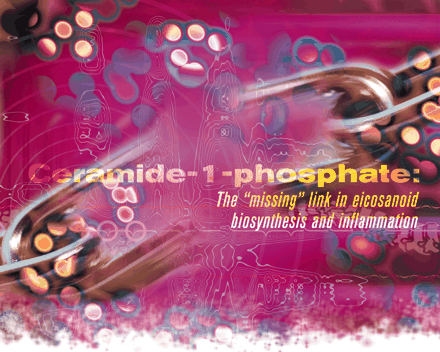Ceramide-1-phosphate: The “missing” link in eicosanoid biosynthesis and inflammation
Abstract
It has been over a decade since ceramide kinase (CERK) and its product, ceramide-1-phosphate (C1P), were first reported. Since itscloning, in 2002, CERK has been the subject of an explosion of publications concerning various signal transduction pathways. The roles of this previously overlooked enzyme, as well as those of its product C1P, continue to expand, and their regulatory functions in the production of eicosanoid inflammatory mediators are proving essential to fundamental signal transduction pathways. In particular, C1P is required for the activation and translocation of cPLA2α, the initial rate-limiting step of eicosanoid synthesis. The potential for inhibitors of CERK to offer a new generation of anti-inflammatory and anti-cancer therapeutics is especially deserving of further study.

- © American Society for Pharmacology and Experimental Theraputics 2005



